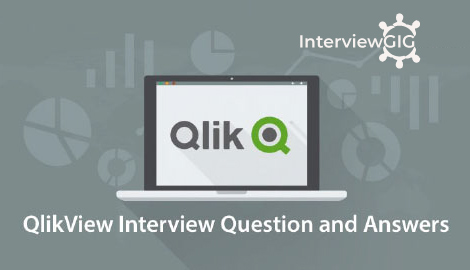What is Qlik sense?
Self-provider records conception utility that enables you to look and determine vast amounts of facts to find out visions of the employer. It uses analytics and Discovery of facts. With Qlik experience, an organization can create elastic, interactive visualizations and make significant decisions.
- It is fast and easy
- Redefines how you access, create and share insight
- Faster time to insight anyone, anytime, anywhere on any device.
What are the main categories in Qlik sense?
- Qlik Sense Desktop
- Qlik Sense Cloud
- Qlik Sense Enterprise
What are the important features of Qlik Sense?
- Drag-and-drop visualizations
- Scalability and Manageability
- Powerful Open and Standard APIs
- Smart Search feature
- Fast and reliable connections to multiple data sources
- Access to real-time analytics anytime, anywhere
- Data storytelling functionality
- Shared Object Library
- Self-service simplicity
- Progressive Creation
- Managed Data Connections
- Rapid Development Environment
- Multi-source data integration including big data
- Enterprise-level security
How do the hierarchical dimensions work in Qlik Sense?
When adding more than one dimension, you can see multiple levels of detail.
Does Qlik converter move VBScript in QlikView files to Qlik Sense?
Qlik Sense does not support the same VB functions that QlikView does. It is likely necessary to rebuild existing QlikView VB items in Qlik Sense mashups/extensions.
What are benefits of Qlik Sense?
Qlik Sense is a self-service tool for business analytics, which negates most existing limitations of Business Intelligence tools.
Qlik Sense is a solution for companies at which employees want to explore and visualize their data independently, without the need for IT support and long waits during the analysis phase. Qlik Sense gives users the ability to create, modify, or expand visualizations.
Qlik Sense has new visualization features and a drag-and-drop experience using a library feature. There is also a new storytelling feature and responsive design that automatically changes depending on which device you is viewing the application on (tablet, phone, computer, etc.
How to handle synthetic keys?
To handle synthetic keys, there are ways to solve this in data load script.
Keys that are to be used have to be logically linked to two tables. Fields like “Comment”, “Remark” and “Description” can still pertain in some tables without being linked and thus couldn’t use them as keys.
Data like “Date”, “Company” and “Name” can pertain in some tables and can have the same values with various (Order Date/Shipping Date, Customer organization/Supplying Organization). In related cases, these cannot be used as keys.
Need to note that redundant fields are not being used- as only essential fields connect. If for example, a date when used as key, ensure that it doesn’t load year, month or day_of_month of similar date of more than 1 internal table
When essential, from own primary keys, characteristically using string concatenation under a function of AutoNumber script.
Does the Qlik converter bring over the load script?
Yes, the converter brings over the load script and libraries. Variables are also converted, but it would be prudent to verify accurate recreation in the converted load script!
How to deploy Qlik sense?
The architecture is based on site concepts. It is a combination of one or more node connected to a common repository or central node.
Qlik sense is deployed in many ways
Deploying single node sites: In this, all the qlik sense services run on a single node.
When there is single time zone, this kind of deployment works.
Deploying multi-node sites: The site is spread out across two or more nodes which contribute the exact set of info and license key.
The basic steps for deploying multimode sites are:
Install the primary node and this becomes the central node, which contains all apps that are needed.
Install additional node as rim node.
In QMC (Qlik management Console) on the central node, add the new node to the site.
Before testing new node, until the first sync.
Similarly, add additional nodes, one at a time, until the multimode site is complete.
How to manage data in the app with data manager?
The data manager is managing and adding data from various sources or from data market of qlik which is visible in apps too. Whether you added them to add data or loaded using scripts. Each table is displayed using table name, data field and source.
Can you explain Qlik sense charts?
Qlik Sense Charts is software as a service (SaaS) offering from Qlik which allows Qlik Sense visualizations to be easily shared on websites and social media. Charts have limited interaction and allow users to explore and discover.
How to connect Qlik Sense with R?
This is the simplest way to use R with Qlik: Enlarging R is the idea behind this, and transfers to a respective folder that Qlik sense is gonna read and thus loads the data. Initially, you need to download and install R, later after choosing analysis, mention on the prescribed script, the place to store the results.
After this, to always run, you need to refresh your analysis, after creating a .exe file.
Thus code needs to be:”add path to R \R\add R VERSION(num.num)\bin\R.exe”
CMD BATCH
–labour –rahul
“add path to tekslatescript\tekslatescript.R”
“add path over heretekslatereport\tekslatereport.txt”
What are the differences between Traditional and Associative Index?
Traditional:
- IT-driven
- Linear,Predefined thinking
- Deep insight not followed
- Many days to change
- Info storing
Eg. Region -State-Product-Sales Person(in specific order)
Associative:
- User-driven
- Follows User
- All data, always visible
- Minutes to change
- Insight driven
Eg. Product-State-Region-Salesperson and in any order (here the relation need not be 1 to 1; it can be in any unorganized manner).
How to create cyclic group in Qlik Sense?
Setting up the basic setting which will be done for all solution is mentioned here
Sample Table Structure:
Id Sample Name Branch State Location
- Sample1 branch1 state1 india
- Sample2 branch2 state2 us
Now I want to create a cyclic drill containing
Loading info and creating in order load
Drill_below:
load * inline
[
SampleName, SampleName_Label
Branch, Branch Name
State, State Name
Location, Location Name
];
Once data is loaded there are 2 ways to view drill_below inFilter (available in sense app)
It is good but wouldn’t able to get the default value and multiple selections may be enabled. Although this works in a way where client won’t care if first load drill is visible and selected.
Much more are available use which ever fits your criteria
Now we have drill selection ready now to link chart to the Drill.
Thus we have selected drill to connect chart to drill
Have two following ways:
- Use if condition
- Use Pick Match
As the above two are obvious, if the info is large, creates lag in chart reloads,
Thus the following approach,
Uses the following function capabilities, in Size, Create dimension
Looking like
$(=if(GetSelectedCount(SampleName_Label)=0,’Location’,only(SampleName)))
Hence create the measure as per requirements; gives the cyclic group.
How to add new data table?
Either you can add data table from data manager or by various data sources.
By connections: Select from data connections which were earlier defined by the user or administrator and folders from where it is selected.
Connect my Data: Select from a new data source such ODBC or OLE , connectors, web files or data files.
Qlikdatamarket: Select from the public or normalized commercial databases.
Attaching a file: Upload file from computer or through an app
How do you publish a sheet?
Publishing a sheet helps for viewing in other users also.
Note: Sheets can be published only with the already published app.
- Click to view the sheets in the app overview.
- Right click/ long touch the sheet you want to publish and select publish.
- Publish sheet dialog appears and press Publish.
The sheets have been published and moved automatically from My sheets to Published by me.
Other users of the app will be able to view it in the community section.
What can be done in Qlik sense Cloud?
Creating apps and sharing the apps using cloud
From this hub we can view or invite users to follow the apps, monitor them. Also, you can generate links to share the content or visualization in the apps.
When logged in, the browser is divided into 3 parts, workspace area, tab panel and toolbar.
What is the use of Dependency wheel chart extension in Qlik sense?
The use of Dependency wheel chart extension in Qlik sense is to showcase the relationship between 2 dimensions through a specific metric.
Can you explain Qlik feel Charts?
Qlik experience Charts is any other software program as a service (SaaS) providing from Qlik which allows Qlik experience visualizations to be without problems shared on websites and social media. Charts have restricted interaction and permit users to explore and find out.
What are the important extensions for Qlik sense?
Some of the extensions for Qlik sense are:
Date range picker
CVL sunburst quadrant
Two-dimensional heatmap

